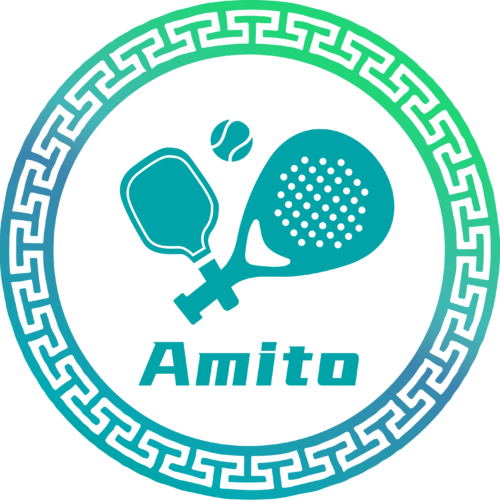If you’re passionate about pickleball, understanding what pickleball paddles are made of can significantly enhance your game experience. The materials used in constructing these paddles play a crucial role in determining their performance, feel, and durability. In this blog post, we’ll take an in – depth look at the various components of pickleball paddles and the materials that go into making them, providing you with valuable insights for your next paddle purchase.
The Core: The Heart of the Paddle
The core is perhaps the most important part of a pickleball paddle, as it influences the paddle’s power, control, and shock absorption. There are several common materials used for the core:
- Polypropylene Honeycomb: This is one of the most popular core materials. Polypropylene honeycomb cores are known for their excellent balance between power and control. The honeycomb structure provides a lightweight yet sturdy foundation. It allows players to generate good power on their shots while also offering precise control, especially when making delicate dinks and drops. Additionally, these cores have great shock – absorbing properties, reducing the impact on the player’s arm and minimizing the risk of injuries like “pickleball elbow.”
- Foam: Foam cores are softer and lighter compared to honeycomb cores. Paddles with foam cores are ideal for players who prefer a more touch – oriented game. They offer enhanced feel and control, making it easier to execute finesse shots. However, foam – core paddles may not generate as much power as those with honeycomb cores, but they are a great choice for players who focus on strategy and accuracy rather than brute force.
- Balsa Wood: Although less common nowadays, balsa wood was once a popular core material. Balsa wood cores are relatively lightweight and offer a unique feel. They can provide a good amount of control, but they may lack the durability and power – generating capabilities of modern core materials.
The Face: Impact and Spin
The face of the pickleball paddle is what comes into contact with the ball, and its material affects the paddle’s impact, spin, and durability:
- Graphite: Graphite – faced paddles are highly sought after by advanced players. The smooth and hard surface of graphite allows for maximum spin generation. When hitting the ball, players can impart more rotation, giving them an edge in aggressive play. Graphite is also extremely durable and can withstand the rigors of intense competition. However, graphite – faced paddles tend to be more expensive compared to other face materials.
- Fiberglass: Fiberglass is a more budget – friendly option that still offers good performance. Fiberglass – faced paddles are more forgiving, making them suitable for beginners or intermediate players. They provide a decent amount of spin and are quite durable, able to handle regular use without significant wear and tear. The surface of fiberglass paddles is slightly textured, which can also contribute to spin, although not as much as graphite.
- Fibra de carbono: Carbon fiber is another high – performance material used for paddle faces. It offers a combination of strength, lightweight properties, and excellent spin capabilities. Carbon – fiber – faced paddles are often used by professional players who demand top – notch performance. They are more expensive but provide a high – end playing experience with enhanced power and control.
The Edge Guard: Protection and Longevity
The edge guard is a crucial component that wraps around the perimeter of the paddle. Its main purpose is to protect the paddle from damage, especially when it comes into contact with the ground, net, or other hard surfaces. Edge guards are typically made of durable materials such as rubber or plastic. Rubber edge guards offer good shock absorption and can help prevent chips and cracks on the paddle’s edges. Plastic edge guards, on the other hand, are often more lightweight and can provide a sleek look. Some edge guards may also have additional features, such as reinforced sections or textured surfaces for better grip.
The Grip: Comfort and Control
The grip of a pickleball paddle is essential for comfort and control during play. Grip materials can vary widely, but some common ones include:
- Rubber: Rubber grips are popular due to their excellent traction and comfort. They provide a firm hold, preventing the paddle from slipping out of the player’s hand, even during intense matches. Rubber grips come in different textures, from smooth to highly textured, allowing players to choose the level of grip that suits their preferences.
- EVA Foam: EVA foam grips are soft and lightweight, offering a cushioned feel. They are often used in paddles designed for players who prefer a more comfortable grip, especially those with sensitive hands or who play for extended periods. EVA foam grips can also help reduce vibrations, enhancing the overall playing experience.
- Corded Grips: Corded grips feature a woven fabric or cord surface. They provide a unique feel and can offer good moisture – wicking properties, keeping the player’s hands dry. Corded grips are favored by some players for their enhanced grip and the ability to customize the thickness by adding additional cord layers.
In conclusion, pickleball paddles are made up of various components, each constructed from different materials that contribute to the paddle’s overall performance. Whether you’re a beginner looking for an affordable and forgiving paddle or an advanced player seeking maximum power and spin, understanding the materials used in pickleball paddles is key to finding the perfect fit for your game. By considering the core, face, edge guard, and grip materials, you can make an informed decision and take your pickleball skills to the next level.
